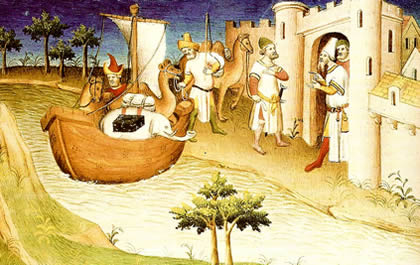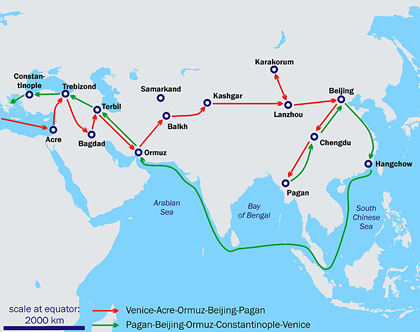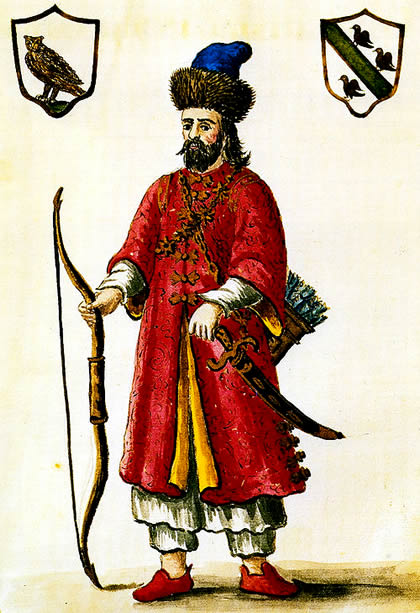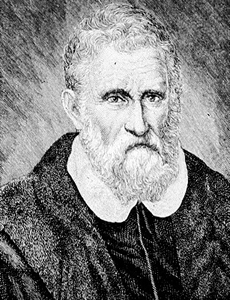World History
Marco Polo, a Venetian merchant, lived for many years in Mongol-ruled China and wrote about what he witnessed there. He is the best known of the many medieval European traders and priests who traveled in Asia beyond its Mediterranean and Black Sea ports.
When he was a child, his father and an uncle visited China. They returned with a letter from the emperor to the pope. When the two Polo brothers made a second journey to China, they took Marco with them, then in his teens. He spent nearly two decades, from the early 1270s to the early 1290s, in China, where he became a favorite of Kubilai Khan, of the Mongol Yuan dynasty (1279–1368).
After Marco Polo returned to Italy, he introduced Europe to the wonders of Cathay, his name for China. Using notes as well as memory, he described what he had learned in a book written in collaboration with an experienced writer, Rustichello of Pisa, while both men were prisoners of war in Genoa.
Writing in a French-Italian dialect, Rustichello adapted Polo’s story to the fashionable genre of chivalric romance. Immediately popular, the book was translated into Latin and several vernacular languages during Polo’s lifetime.
In some ways the book written by Polo with Rustichello is not as informative as another well-known book by a medieval traveler, Ibn Batuta. It is a frustratingly impersonal book.
Despite the title Travels of Marco Polo, it offers few details about the routes by which Polo traveled to China and back to Europe, or the dangers and discomforts that he experienced. Probably the claim that each of the journeys took several years is a literary device to emphasize how distant China was from Europe.
If someone traveled continuously, such a journey probably took about nine months. In the book there is a bit of ethnography (for instance, religions practiced) and economics (such as the use of paper money), but most of its pages comprise a geographical map of China, especially its rich cities.
Europeans learned from Polo that, compared with their own societies, China was an enormous country, much more wealthy and much more advanced in methods of technology, government, and warfare. Although inaccurate in what he said about Japan, Polo was the first European to mention the existence of the island country.
Scholars have sometimes doubted that Polo traveled farther east than Persia, where he could have obtained secondhand news about China. He ignored topics that modern readers would expect, such as the Great Wall of China, foot binding, tea drinking, and the Chinese method of writing.
Although he claimed to have been a great favorite of the emperor, Chinese governmental records say nothing about him. Polo provided Persian names for Chinese places, not Chinese names.
On balance the evidence supports the truthfulness of the book, although a few passages are inventions, perhaps attempts by Rustichello to add interest to what otherwise could have been dull lists of facts. Although Polo spoke and read several languages, he did not know Chinese or, for that matter, Latin.
He mostly lived at the Mongol court in northern China, where Persian was widely used, and where the Mongol emperor often trusted foreign adventurers more than he did his Chinese subjects. When Polo died, he left mementos of his travels, including the gold tablet that served as a kind of pass from the emperor or great khan to help the Polo family in their westward journey.
- Printing Invention In China
Printing Invention in China Paper and printing were both invented by the Chinese, with immense importance for the advancement of civilization in China and worldwide. Papermaking was invented in China around 100 c.e. The technology spread to the Muslim...
- Year 1000: A Legacy Of Science & Technology
Year 1000: A Legacy of Science & Technology. This is an online exhibit that explores the events in Europe and influences from China, India, and the Islamic world that began an intellectual revolution. I found this site informative, easy to navigate,...
- Chinese Dowager Empress Tzu Hsi
Chinese Dowager Empress Tzu Hsi - The life of Tzu Hsi, who rose from being a concubine in the Forbidden City to become the empress of China. From the site: Tzu Hsi (pronounced "Tsoo Shee" and spelled Cixi in Pinyin) was born on November 29, 1835....
- Teaching About China
Teaching about China. This is an essay on teaching about China. It includes some information on Chinese history. The essay is a bit dated but still good. From the site: Contributing to the misunderstanding of China is a condition of political ambiguity,...
- Famous Voyages
Map Site Traces Famous Voyages If you want to show your students the voyages of Magellan, Columbus, Lindbergh's flight to Paris, DeSoto, the Silk Road, Marco Polo and others, this site is a great one. It also includes pictures and descriptions which...
World History
Marco Polo
 |
| Marco Polo Journey |
Marco Polo, a Venetian merchant, lived for many years in Mongol-ruled China and wrote about what he witnessed there. He is the best known of the many medieval European traders and priests who traveled in Asia beyond its Mediterranean and Black Sea ports.
When he was a child, his father and an uncle visited China. They returned with a letter from the emperor to the pope. When the two Polo brothers made a second journey to China, they took Marco with them, then in his teens. He spent nearly two decades, from the early 1270s to the early 1290s, in China, where he became a favorite of Kubilai Khan, of the Mongol Yuan dynasty (1279–1368).
After Marco Polo returned to Italy, he introduced Europe to the wonders of Cathay, his name for China. Using notes as well as memory, he described what he had learned in a book written in collaboration with an experienced writer, Rustichello of Pisa, while both men were prisoners of war in Genoa.
  |   |
Writing in a French-Italian dialect, Rustichello adapted Polo’s story to the fashionable genre of chivalric romance. Immediately popular, the book was translated into Latin and several vernacular languages during Polo’s lifetime.
In some ways the book written by Polo with Rustichello is not as informative as another well-known book by a medieval traveler, Ibn Batuta. It is a frustratingly impersonal book.
 |
| Marcopolo traveling map |
Despite the title Travels of Marco Polo, it offers few details about the routes by which Polo traveled to China and back to Europe, or the dangers and discomforts that he experienced. Probably the claim that each of the journeys took several years is a literary device to emphasize how distant China was from Europe.
If someone traveled continuously, such a journey probably took about nine months. In the book there is a bit of ethnography (for instance, religions practiced) and economics (such as the use of paper money), but most of its pages comprise a geographical map of China, especially its rich cities.
 |
| Marco Polo in tartare costume |
Europeans learned from Polo that, compared with their own societies, China was an enormous country, much more wealthy and much more advanced in methods of technology, government, and warfare. Although inaccurate in what he said about Japan, Polo was the first European to mention the existence of the island country.
Scholars have sometimes doubted that Polo traveled farther east than Persia, where he could have obtained secondhand news about China. He ignored topics that modern readers would expect, such as the Great Wall of China, foot binding, tea drinking, and the Chinese method of writing.
 |
| Old Marco Polo |
On balance the evidence supports the truthfulness of the book, although a few passages are inventions, perhaps attempts by Rustichello to add interest to what otherwise could have been dull lists of facts. Although Polo spoke and read several languages, he did not know Chinese or, for that matter, Latin.
He mostly lived at the Mongol court in northern China, where Persian was widely used, and where the Mongol emperor often trusted foreign adventurers more than he did his Chinese subjects. When Polo died, he left mementos of his travels, including the gold tablet that served as a kind of pass from the emperor or great khan to help the Polo family in their westward journey.
- Printing Invention In China
Printing Invention in China Paper and printing were both invented by the Chinese, with immense importance for the advancement of civilization in China and worldwide. Papermaking was invented in China around 100 c.e. The technology spread to the Muslim...
- Year 1000: A Legacy Of Science & Technology
Year 1000: A Legacy of Science & Technology. This is an online exhibit that explores the events in Europe and influences from China, India, and the Islamic world that began an intellectual revolution. I found this site informative, easy to navigate,...
- Chinese Dowager Empress Tzu Hsi
Chinese Dowager Empress Tzu Hsi - The life of Tzu Hsi, who rose from being a concubine in the Forbidden City to become the empress of China. From the site: Tzu Hsi (pronounced "Tsoo Shee" and spelled Cixi in Pinyin) was born on November 29, 1835....
- Teaching About China
Teaching about China. This is an essay on teaching about China. It includes some information on Chinese history. The essay is a bit dated but still good. From the site: Contributing to the misunderstanding of China is a condition of political ambiguity,...
- Famous Voyages
Map Site Traces Famous Voyages If you want to show your students the voyages of Magellan, Columbus, Lindbergh's flight to Paris, DeSoto, the Silk Road, Marco Polo and others, this site is a great one. It also includes pictures and descriptions which...
